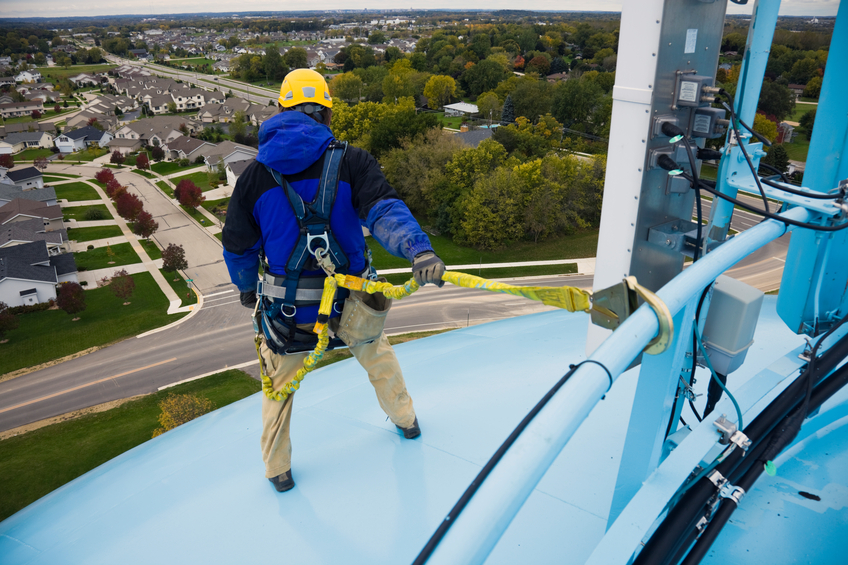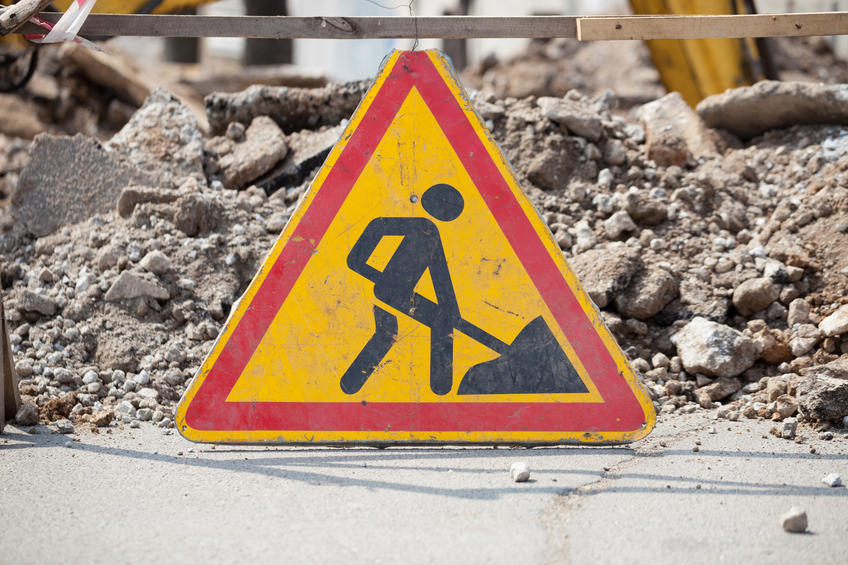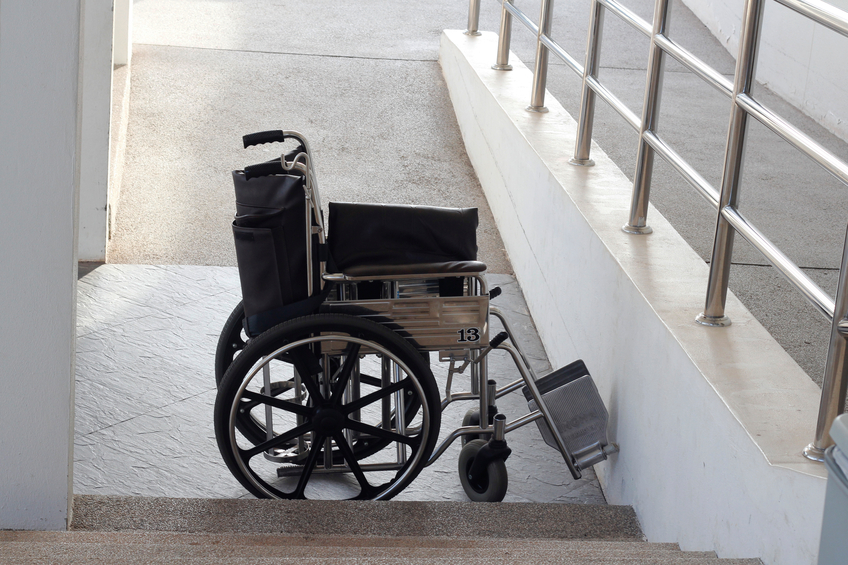Tennessee Construction & Health/Safety/Welfare 24 PDH Discount Pkg 2
Courses in this Package
Fall Protection in Construction (C03-057)
Personal Protective Equipment (T03-003)
Controlling Electrical Hazards (E02-002)
Hazards of Chemicals and Gases (H05-002)
Underground Construction Safety (C03-014)
Public Right of Way Accessibility Guidelines (PROWAG) (C02-041)
ADA Update: A Primer for State and Local Government (A01-005)
Engineering Ethics Case Study: The Challenger Disaster (LE3-001)
Ethics in Professional Practice (LE2-007)

This online engineering PDH course presents the OSHA guidelines for fall protection for protecting workers against potential fall hazards.
Historically, falls are the leading cause of fatalities in construction, accounting for about one-third of all fatalities in the industry. Workers involved in working at heights are exposed to potential fall hazards. Accidents involving falls are generally complex events frequently involving a variety of factors
OSHA recognizes that working at heights presents serious hazards to all workers involved. Consequently, the standard for fall protection deals with both the human and equipment-related issues in protecting workers from fall hazards.
This 3 PDH online course is intended for employers/business owners, engineers, managers and construction workers interested in better understanding the Fall Protection in Construction requirements and the reasons behind them.
This PE continuing education course is intended to provide you with the following specific knowledge and skills:
- Identifying potential fall hazards
- Selecting fall protection systems appropriate for existing conditions
- Implementing proper construction and installation of safety systems
- Training and supervising employees in the proper selection, use and maintenance of fall protection systems
In this professional engineering CEU course, you need to review the OSHA Standard, "Fall Protection in Construction", (OSHA 3146), published in 2015.
Once you complete your course review, you need to take a multiple-choice quiz consisting of twenty (20) questions to earn 3 PDH credits. The quiz will be based on this OSHA publication.
Upon successful completion of the quiz, print your Certificate of Completion instantly. (Note: if you are paying by check or money order, you will be able to print it after we receive your payment.) For your convenience, we will also email it to you. Please note that you can log in to your account at any time to access and print your Certificate of Completion.

This online engineering PDH course addesses Personal Protective Equipment (PPE) types, selection and training, as well as conducting a hazard assessment of the workplace.
Hazards exist in every workplace in many different scenarios: sharp edges, falling objects, flying sparks, chemicals, noise and a myriad of other potentially dangerous situations. Controlling a hazard at its source is the best way to protect employees. Depending on the hazard or workplace conditions, OSHA recommends the use of engineering or work practice controls to manage or eliminate hazards to the greatest extent possible. Therefore, OSHA developed the Personal Protection Equipment Standard to protect employees from workplace hazards that can cause injury.
This 3 PDH online course is applicable to all engineers, employers, building owners, facility managers, and all personnel working on construction projects.
This PE continuing education course is intended to provide you with the following specific knowledge and skills:
- Understanding the types of personal protective equipment (PPE)
- Knowing the basics of conducting a "hazard assessment" of the workplace
- Selecting the appropriate PPE for a variety of circumstances
- Understanding what kind of training is needed for the proper use and care of PPE
In this professional engineering CEU course, you need to review OSHA 3151-12R, "Personal Protective Equipment".
Upon successful completion of the quiz, print your Certificate of Completion instantly. (Note: if you are paying by check or money order, you will be able to print it after we receive your payment.) For your convenience, we will also email it to you. Please note that you can log in to your account at any time to access and print your Certificate of Completion.

This online engineering PDH course provides OSHA guidance on controlling electrical hazards for protecting workers from exposure to electrical hazards.
Electricity has been long recognized as a serious workplace hazed, exposing employees to electric shock, electrocution, burns, fires and explosions. According to the Bureau of Labor Statistics, many workers have died from electrocutions at work, accounting for as many as 5% of all on-the-job-fatalities in a given year. What makes these statistics more tragic is that most of these fatalities could have been easily avoided.
OSHA recognizes that electrical hazards present serious hazards to all workers involved. Therefore, OSHA developed several standards for Controlling Electrical Hazards to protect employees working in the construction industry from exposure to electrical hazards.
This 2 PDH online course is applicable to employers, building owners, engineers, electricians, managers, construction workers and any other personnel working on construction projects that involve exposure to electrical hazards.
This PE continuing education course is intended to provide you with the following specific knowledge and skills:
- What affects the flow of electricity
- What is the cause of shocks and their effect on the body
- How to react if someone "freezes" to a live electrical contact
- How to protect yourself against electrical hazards
- What protection does insulation provide
- What are the different types of insulation
- What are circuit protection devices
- What work practices help protect you from electrical hazards
- What role do tools play
- Employee training
In this professional engineering CEU course, you need to review OSHA 3075, "Controlling Electrical Hazards".
Upon successful completion of the quiz, print your Certificate of Completion instantly. (Note: if you are paying by check or money order, you will be able to print it after we receive your payment.) For your convenience, we will also email it to you. Please note that you can log in to your account at any time to access and print your Certificate of Completion.

This online engineering PDH course explains why certain chemicals are considered hazardous to personnel working in facilities containing such chemicals. It also provides an overview of handling chemicals as well as provides resources of information about these chemicals.
The various chemicals found in our industry as well as the home are useful when properly applied. If the user is uninformed about correct applications, storage, and potential hazards, these chemicals can become threats to our safety.
This 5 PDH online course is applicable to chemical and environmental engineers, design and construction personnel, technical staff and facility operators who are interested in gaining a better understanding of the hazards of chemicals and gases.
This PE continuing education course is intended to provide you with the following specific knowledge and skills:
- Corrosives
- Toxic compounds
- Compressed gases
- Flammable and combustible liquids
In this professional engineering CEU course, you need to review Module 5, "Hazards of Chemicals and Gases" of the Department of Energy Publication DOE-HDBK-1015/1-93, "Chemistry".
Upon successful completion of the quiz, print your Certificate of Completion instantly. (Note: if you are paying by check or money order, you will be able to print it after we receive your payment.) For your convenience, we will also email it to you. Please note that you can log in to your account at any time to access and print your Certificate of Completion.

This online engineering PDH course summarizes OSHA's regulations related to underground construction.
The construction of underground tunnels, shafts, chambers, and passageways are essential yet dangerous activities. Working under reduced light conditions, difficult or limited access and egress, with the potential for exposure to air contaminants and the hazards of fire and explosion, underground construction workers face many dangers. OSHA recognizes that working in underground environments presents serious hazards to all workers involved. Therefore OSHA developed the underground construction standard to protect the safety and health of underground construction workers.
This 3 PDH online course is applicable to employers/business owners, engineers, managers, construction workers and all other personnel involved with underground construction projects.
This PE continuing education course is intended to provide you with the following specific knowledge and skills:
- Knowing the construction operations covered by the OSHA regulations
- Familiarizing with the training, notification and communications requirements
- Understanding the site access and ground support procedures
- Understanding the ventilation, illumination and air monitoring requirements
- Learning the special conditions for underground drilling and blasting
- Learning the special requirements for using underground cranes and hoists
- Understanding the hazards that require special precautions and emergency procedures
In this professional engineering CEU course, you need to review OSHA, 3115-06R, "Underground Construction".
Upon successful completion of the quiz, print your Certificate of Completion instantly. (Note: if you are paying by check or money order, you will be able to print it after we receive your payment.) For your convenience, we will also email it to you. Please note that you can log in to your account at any time to access and print your Certificate of Completion.

This online engineering PDH course presents the main requirements for
This 2 PDH online course is applicable to civil engineers, construction managers, architects and inspectors who are involved with construction in the public right of way.
This PE continuing education course is intended to provide you with the following specific knowledge and skills:
- Familiarizing with the government agencies involved with PROWAG
- Understanding which projects require PROWAG compliance
- Knowing the differences between the current ADA requirements and PROWAG
- Learning about PROWAG sidewalk and slope requirements
- Learning about PROWAG curb ramp requirements
- Learning about PROWAG detectable warning requirements
- Understanding practical examples of reconstructing existing conditions to be PROWAG compliant
In this professional engineering CEU course you will review the main requirements of PROWAG along with practical design examples.
Upon successful completion of the quiz, print your Certificate of Completion instantly. (Note: if you are paying by check or money order, you will be able to print it after we receive your payment.) For your convenience, we will also email it to you. Please note that you can log in to your account at any time to access and print your Certificate of Completion.

This online engineering PDH course provides general guidance to assist State and local governments in understanding and complying with current Americans with Disabilities Act (ADA) requirements.
The Department of Justice revised its regulations implementing the ADA in September 2010. The new rules clarify issues that arose over the previous 20 years and contain new requirements, including the 2010 ADA Standards for Accessible Design (2010 Standards).
This 1 PDH online course is intended for engineers employed by State or local governments.
This PE continuing education course is intended to provide you with the following specific knowledge and skills:
- Knowing who is protected under the ADA
- Understanding people’s responsibilities under the ADA
- Understanding the general non-discrimination requirements
- Learning how to make the built environment accessible
- Understanding the use of ADA coordinators, grievance procedures and self-evaluation plans
In this professional engineering CEU course, you need to review the course document titled, “ADA Update: A Primer for State and Local Government,” June, 2015.
Once you complete your course review, you need to take a multiple-choice quiz consisting of ten (10) questions to earn 1 PDH credit. The quiz will be based on this ADA publication.
Upon successful completion of the quiz, print your Certificate of Completion instantly. (Note: if you are paying by check or money order, you will be able to print it after we receive your payment.) For your convenience, we will also email it to you. Please note that you can log in to your account at any time to access and print your Certificate of Completion.

This online engieering PDH course provides instruction in engineering ethics through a case study of the Space Shuttle Challenger disaster. The minimum technical details needed to understand the physical cause of the Shuttle failure are presented. The disaster itself is chronicled through NASA photographs. Next the decision-making process, especially the discussions occurring during the teleconference held on the evening before the launch, is described. Direct quotations from engineers interviewed after the disaster are used to illustrate the ambiguities of the data and the pressures that the decision-makers faced in the months and hours preceding the launch. The course culminates in an extended treatment of six ethical issues raised by Challenger.
This 3 PDH online course is intended for all engineers who are interested in gaining a better understanding about the ethical issues that lead to the Challenger disaster and how they could have been avoided.
This PE continuing education course is intended to provide you with the following specific knowledge and skills:
- Common errors to avoid in studying the history of an engineering failure: the retrospective fallacy and the myth of perfect engineering practice
- Shuttle hardware involved in the disaster
- Decisions made in the period preceding the launch
- Ethical issue: NASA giving first priority to public safety over other concerns
- Ethical issue: the contractor giving first priority to public safety over other concerns
- Ethical issue: whistle blowing
- Ethical issue: informed consent
- Ethical issue: ownership of company records
- Ethical issue: how the public perceives that an engineering decision involves an ethical violation
In this professional engineering CEU course, you need to review the course document titled, "Engineering Ethics Case Study: The Challenger Disaster".
Upon successful completion of the quiz, print your Certificate of Completion instantly. (Note: if you are paying by check or money order, you will be able to print it after we receive your payment.) For your convenience, we will also email it to you. Please note that you can log in to your account at any time to access and print your Certificate of Completion.

In this online engineering PDH course, background on the philosophical models that guide ethical behavior is discussed and then applied to specific situations in engineering codes of ethics. This course is based on the American Society of Mechanical Engineers Professional Practice Curriculum, Volume 8, Section: Engineering Ethics.
Many engineering organizations have drafted codes of ethics to which their members are required to commit. Generally, these codes are quite similar and are based on a few fundamental principles which provide guidance to professional engineers in common situations. Nevertheless, there are many difficult or ambiguous situations in which the best ethical solution is difficult to determine.
This 2 PDH online course is intended primarily for engineers seeking to learn ethical principles and how to apply them to their professional practice.
This PE continuing education course is intended to provide you with the following specific knowledge and skills:
-
Determining ethical behavior using several philosophical models
-
Evaluating a practical situation in terms of a professional code of ethics
-
Identifying situations that represent conflicts of interest and formulate a proper response
-
Applying the standards of professional ethics in technical communication
-
Recognizing environmental impacts of engineering work
-
Considering principles of sustainable development in the performance of professional duties
In this professional engineering CEU course, you need to review "Ethics in Professional Practice" published by the American Society of Mechanical Engineers (ASME). (This course document is reproduced by permission of the ASME (www.asme.org). You may also download from or view this course document on the ASME's website by clicking on Ethics in Professional Practice).
Once you complete your course review, you need to take a multiple-choice quiz consisting of fifteen (15) questions to earn 2 PDH credit. The quiz will be based on this ASME publication.
Upon successful completion of the quiz, print your Certificate of Completion instantly. (Note: if you are paying by check or money order, you will be able to print it after we receive your payment.) For your convenience, we will also email it to you. Please note that you can log in to your account at any time to access and print your Certificate of Completion.